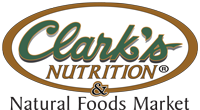Search Healthnotes

Related Topics
- By Suzanne Dixon
"Diabetes-Friendly" Defined
Contrary to common expectation, people diagnosed with diabetes can enjoy the same tasty, healthy, “normal” foods we all eat. The key to eating healthfully and managing your blood sugar levels is balance. All foods can be part of a healthy, diabetes-friendly diet, so long as you eat a proportioned, varied range of foods overall, and spread them out throughout your day to give your body a consistent source of healthy fuel.
People diagnosed with diabetes can enjoy the same tasty, healthy, 'normal' foods we all eat
Exchanging less-healthy for more-healthy
Ideally, a person who is newly diagnosed with diabetes will visit with a Certified Diabetes Educator (CDE), typically a dietitian or nurse, to learn about the exchange list system for diabetic meal planning. The diabetic exchange system assigns foods into a variety of categories, such as starches, carbohydrates, vegetables, fats, and meat and meat substitutes (protein). For help finding a CDE, you can try websites like www.eatright.org, where you can enter your zip code to find registered dietitians in your area.
Your CDE then teaches you how common foods fit into the different categories. You’ll learn how many exchanges, or servings, from each of these categories you should eat each day to best manage your blood sugar levels. Then you can decide how you want to spread out those exchanges throughout your typical day to best manage your blood sugar level and enjoy your meals and snacks.
Diabetes-friendly to meet your needs
When you can, you should always do your best to use the diabetes exchange system to manage your food choices. But when real life throws a curveball and you’re forced to pull together a quick meal or snack without the time to sort through the exchanges—fear not! We’ve selected a delicious collection of recipes, representing a broad range of foods, that will help you enjoy tasty, healthy meals and snacks that meet the basic needs of your eating plan. From main dishes to dessert, salads to soups, and everything in between, we’ve got your covered.
We assume 2,200-calories per day as appropriate for a moderately-active, average adult, and divided these calories into carbohydrate, protein, and fat, as follows:
- 50 to 55% from carbohydrates
- 15 to 20% from protein
- No more than 30% from fat
Since most people don’t think in percentages, you can roughly translate them into the following approximate amounts each day:
- 275 to 300 grams of carbohydrate
- 83 to 110 gram of protein
- No more than 73 grams of fat
Next we made sure our diabetes-friendly recipes meet basic guidelines for good health in terms of the amount of sodium, fiber, and saturated fat:
- Eating no more than 1,500 mg of sodium per day
- Making sure to get at least 21 to 38 grams of fiber each day; the more total calories you eat, the more fiber you need
- Eating no more than 7% of total calories, or about 17 grams, of saturated fat per day
Finally, we divided these basic daily goals into three meals and two to three snacks per day. The criteria for what makes a certain dessert fit that diabetes-friendly category may be different for what makes a diabetes-friendly snack, side dish, or main dish. For this reason, not any combination of these recipes is appropriate for everybody. Work with your dietitian or CDE until you understand how to calculate the right nutrition totals for yourself.
Tools you can use for real life
In addition to using these recipes, you can keep the following tips in mind to help you make the best, healthiest, tastiest food choices you can—choices that will help you maintain healthy blood sugar levels and your good health!
- For many people, having about 45 to 60 grams of carbohydrate at meals is about right
- If you want dessert, cut back on other carbohydrate-rich foods, such as pasta and bread, at the same meal
- Fiber is not digested and absorbed like starches and sugars are; fiber can slow the conversion of simple carbohydrates from food you eat into blood sugar; for this reason, the fiber grams are subtracted from the total carbohydrate grams in determining the carbohydrates contained in each meal and snack
- The more of your carbohydrates you can eat as fiber-rich complex carbs, such as vegetables, legumes (beans and peas), and whole grains, the better
- To protect heart health, remember fish as an alternative to other meat sources and avoid fried foods, opting instead for food prep options like baking or grilling (if grilling, use a marinade for further protective effects)
Diabetes does not mean diet
Now that you understand a bit about how to eat healthfully to best manage diabetes, you can be comfortable knowing that the phrase “diabetes diet” has nothing to do with a lifetime of deprivation and special diet foods. Eating well with diabetes means eating what you love and balancing it with what you need.











